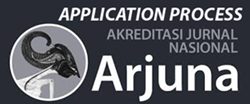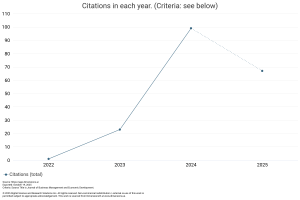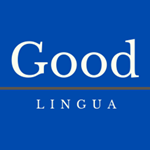Determination of Labor Absorption on Tourism Sector in Denpasar City
DOI:
https://doi.org/10.59653/jbmed.v2i02.841Keywords:
labor absorption, traveler, tourist attraction, hotel, restaurantAbstract
This research aims to show whether the dependent variable, namely Labor Absorption in the Tourism Sector, is influenced by the independent variables (Number of Tourists, Number of Tourist Attractions, Number of Hotels, and Number of Restaurants). This research was conducted using secondary data and time series with a time period of 15 years, namely from 2008 to 2022. Multiple linear regression analysis is a tool used to analyze and is processed using the SPSS 27 application program. The results of this research show that it is known in detail The overall simultaneousness of the independent variables has a positive and significant influence on labor absorption. Then the results of all independent variables, namely the number of tourists, have a significant effect on employment in the tourism sector in Denpasar City. Meanwhile, the number of tourist attractions, hotels and restaurants does not have a significant effect on employment in the tourism sector in Denpasar City.
Downloads
References
Ashari, B., Susanti, A. D., & Wardhianto, G. (2020). Hotel Resort di Kawasan Wisata Kaliurang Yogyakarta (Hotel Resort in Kaliurang Tourism Yogyakarta). Journal of Architecture, 6(1).
Chairany S., P. S. E., & Darsini, P. (2022). Dasar-Dasar Usaha Layanan Pariwisata (W. Rahayu, Ed.). Kementerian Pendidikan, Kebudayaan, Riset, dan Teknologi.
Eddyono, F. (2021). Pengelolaan Destinasi Pariwisata. Uwais Inspirasi Indonesia.
Ekawatiningsih, W. R. P. (2020). Manajemen Pelayanan Makanan dan Minuman. UNY Press.
Gulo, Y., & Octafian, R. (2024). The Change of Millennial Tourist Interests in Sam Poo Kong Temple, Semarang. Pancasila International Journal of Applied Social Science, 2(02 SE-Articles), 275–283. https://doi.org/10.59653/pancasila.v2i02.764
Gunawan, A. Z., & Kencana, W. H. (2023). Influence of Traveloka’s Instagram Social Media Advertising on Sumba on Followers’ Visit Decisions. Pancasila International Journal of Applied Social Science, 2(01). https://doi.org/10.59653/pancasila.v2i01.478
Hakimi, M., Fazil, A. W., Hakimi, S., Hakimi, F. M., & Najieb, K. (2023). Exploring the Influences of Cutting-Edge Technologies on Operational Efficiency, Productivity, and Financial Profitability in Afghanistan’s Tourism Sector. Jurnal Riset Multidisiplin Dan Inovasi Teknologi, 2(01), 168–183. https://doi.org/10.59653/jimat.v2i01.417
Hasbiana, N. (2022). Dasar-Dasar Kuliner (I. R. Ernawati & Meylina, Eds.). Kementerian Pendidikan, Kebudayaan, Riset, dan Teknologi.
Hidayani, Z. N. (2023). Analisis Penyerapan Tenaga Kerja Pada Sektor Pariwisata di Provinsi Jawa Barat. Universitas Islam Indonesia.
Hidayati, Nainggolan, H., Erdiansyah, R., Ratri, W. S., Gorda, E. S., Prastiwi, N. L. P. E. Y., Kadiman, H. S., Adnyana, I. P. A., Nurfitriyenny, Siska, A. J., Simandjorang, B. M. T. V., & Ningsih, L. K. (2022). Ekonomi Sumber Daya Manusia (D. W. Mulyasari, Ed.; 1st ed., Vol. 1). Pradina Pustaka.
Mendrofa, H., & Octafian, R. (2024). Social and Economic Impacts of Tourism Development on the Local Community of Kampung Pelangi, Semarang. Pancasila International Journal of Applied Social Science, 2(02 SE-Articles), 284–291. https://doi.org/10.59653/pancasila.v2i02.775
Napu, D. M., Yamini, E. A., Nurhidayat, W., Salean, F. J., Prianka, W. G., Rifai, M. S. A., Baswarani, D. T., Novianto, U., Fadlina, S., Desmantyo, P. S., Darsana, I. M., Dirgantara, A. R., Sinaga, F., & Margarena, A. N. (2023). Pengantar Bisnis Pariwisata : Perhotelan, Food and Beverage Service, dan Pengembangan Destinasi Wisata (M. A. Wardana, Ed.). Intelektual Manifes Media.
Pariyanti, E., Rinnanik, & Buchori. (2020). Objek Wisata dan Pelaku Usaha (Dampak Pengembangan Objek Wisata terhadap Ekonomi Masyarakat) (E. Pariyanti, Ed.). Pustaka Aksara.
Pertiwi, A. A. R. (2018). Analisis Pengaruh Sektor Pariwisata Terhadap Penyerapan Tenaga Kerja di Daerah Istimewa Yogyakarta Tahun 2006-2015. Universitas Islam Indonesia.
Saputra, Y. E., & Muchtolifah. (2023). Analisis Pengaruh Sektor Pariwisata Terhadap Penyerapan Tenaga Kerja di Kota Batu. JEMSI (Jurnal Ekonomi, Manajemen, Dan Akuntansi).
Sjaifurrachman, S., & Fithry, A. (2024). Role of Sumenep Community Related Development of Culture-Based Tourism in Sumenep Regency. Pancasila International Journal of Applied Social Science, 2(02 SE-Articles), 183–195. https://doi.org/10.59653/pancasila.v2i02.695
Toreh, Y. F. P. (2019). Analisis Penyerapan Tenaga Kerja Sektor Pariwisata di Provinsi Kepulauan Riau Tahun 2012-2017. Universitas Brawijaya.
Viany, I., Babaro, E. I., Jessika, A., & Shella, Y. M. (2023). Pemberdayaan Masyarakat Melalui Pengelolaan Objek Wisata di Desa Saham Kecamatan Sengah Temila Kabupataen Landak. Journal of Community Service and Society Empowerment, 2(01 SE-Articles), 74–85. https://doi.org/10.59653/jcsse.v2i01.430
Wahyu, Y. F., & Triani, M. (2023). Pengaruh Sektor Pariwisata Terhadap Penyerapan Tenaga Kerja di 9 Destinasi Wisata Favorit Kabupaten/Kota Provinsi Sumatera Barat. Jurnal Kajian Ekonomi Dan Pembangunan.
Wirawan, P. E., & Semara, I. M. T. (2021). Pengantar Pariwisata (A. A. A. A. S. Arianty, Ed.). IPB Internasional Press.
Downloads
Published
How to Cite
Issue
Section
License
Copyright (c) 2024 Tiara Puspita Anggraeni, Niniek Imaningsih

This work is licensed under a Creative Commons Attribution-ShareAlike 4.0 International License.
Authors who publish with this journal agree to the following terms:
- Authors retain copyright and grant the journal right of first publication with the work simultaneously licensed under a Creative Commons Attribution-ShareAlike that allows others to share the work with an acknowledgement of the work's authorship and initial publication in this journal.
- Authors are able to enter into separate, additional contractual arrangements for the non-exclusive distribution of the journal's published version of the work (e.g., post it to an institutional repository or publish it in a book), with an acknowledgement of its initial publication in this journal.
- Authors are permitted and encouraged to post their work online (e.g., in institutional repositories or on their website) prior to and during the submission process, as it can lead to productive exchanges, as well as earlier and greater citation of published work (See The Effect of Open Access).





























